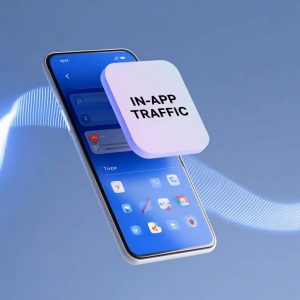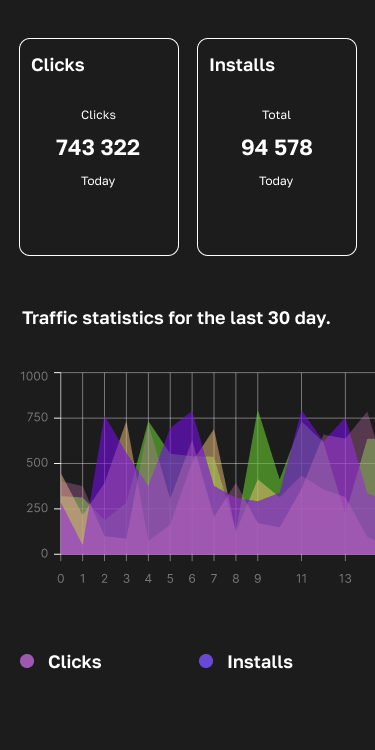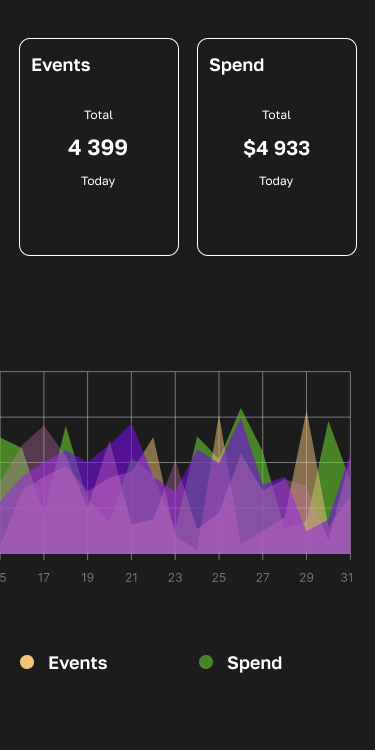Mobile marketers call in-app traffic every click, impression, or event that happens inside a mobile application — an environment where users now spend more than five hours a day and advertisers enjoy richer formats, lower fraud, and sharper targeting than on the mobile web. Below is an end-to-end guide — packed with SEO keywords and fresh 2025 data — to help UA teams unlock the full value of programmatic in-app advertising.
What Is In-App Traffic?
In-app traffic is ad inventory that lives inside third-party mobile apps and is bought via SDK networks, supply-side platforms, or real-time bidding on a DSP. Because ad calls originate from the app itself, buyers can tap device IDs, contextual signals, or privacy-safe cohorts to reach precise audiences.
Why In-App Beats Mobile Web
- Attention magnet – Consumers spend ≈92 % of mobile time in apps, giving in-app ads a natural share-of-voice advantage over browser placements.
- Richer formats – Playable, rewarded, and native units routinely deliver 3-5× higher click-through rates (CTR) than standard banners.
- Higher earnings – Median rewarded-video eCPM reached $10.50 in 2024, far above display averages.
- Cleaner inventory – Made-for-advertising sites are rare in apps, and hardware-level IDs reduce spoofing vectors.
Market Size & Spend Trends
Programmatic will capture 87% of all digital-display dollars — and virtually every new display dollar — by 2025, cementing programmatic in-app as the default buying method. Global in-app ad spend is forecast to exceed $314 B next year, outpacing overall digital growth.
Key Formats & Benchmarks
| Format | Typical Use Case | Performance Snapshot |
| Banner/Native | Always-on awareness | Low CPM, modest CTR |
| Interstitial | Chapter breaks, level ends | Strong for app installs |
| Rewarded Video | Gaming, streaming | 3-5× CTR vs. banners; opt-in value exchange |
| Playable | Game trials, fintech demos | Highest engagement; boosts post-install retention |
Measurement & Privacy
- SKAN 4 adoption hit 27–43% of iOS postbacks in early 2024, giving advertisers deeper conversion windows and coarse values for modeling.
- Android Privacy Sandbox now offers the Protected Audience API for remarketing without sharing cross-app identifiers.
- Both ecosystems support event-level bidding, letting DSPs optimise for purchases, subscriptions, or LTV instead of simple installs.
Fraud & Quality Control
Digital-ad fraud drained an estimated $84 B in 2023, and up to a quarter of that hit mobile budgets. Open Measurement SDK adoption across top verification vendors is improving viewability signals and cutting invalid in-app impressions by as much as 16×.
Core Metrics to Track
- Impressions & Clicks – feed CPM / CPC efficiency.
- CTR & CVR – creative relevance and funnel health.
- eCPM / eCPA – normalises cost across buying models.
- Retention & LTV – indispensable for event-based optimisation.
Best-Practice Checklist for 2025 UA
- Integrate an MMP (AppsFlyer, Adjust, Singular) before launch to get deterministic attribution.
- Start on CPI, then shift to event bids once you record ≥1 000 target actions — ROAS jumps after ML models exit learning.
- Layer fraud filters at both DSP and verification-vendor level; enable Open Measurement viewability.
- Rotate creatives weekly, especially rewarded and playable units, to avoid fatigue.
- Respect UX — cap interstitial frequency and align rewarded ads with natural break points.
Looking Ahead
With consumers glued to apps and programmatic pipes approaching total dominance, in-app advertising is set to deliver even more scale, precision, and ROI in 2026. Brands that pair privacy-safe IDs, fraud controls, and event-level bidding today will own tomorrow’s growth curve.










